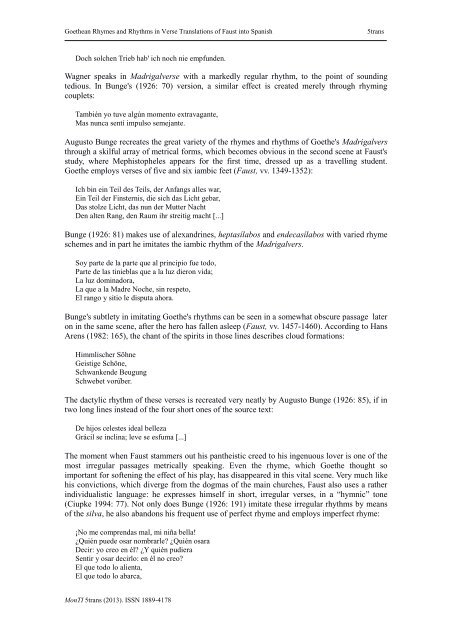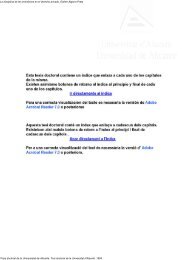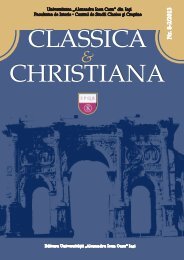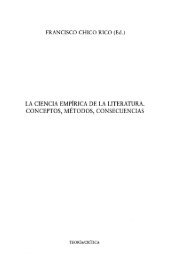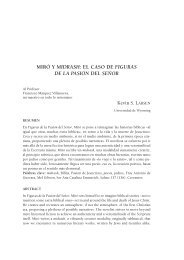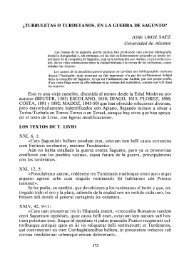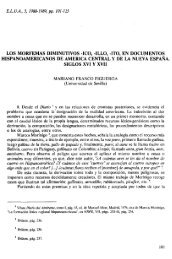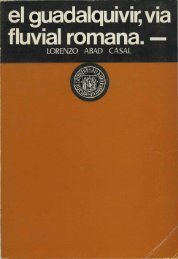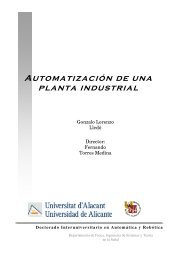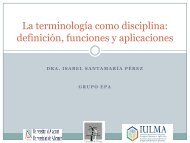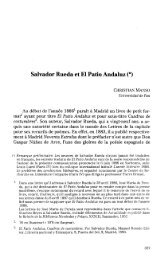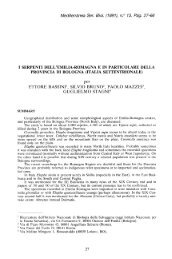goethean rhymes and rhythms in verse translations of faust ... - RUA
goethean rhymes and rhythms in verse translations of faust ... - RUA
goethean rhymes and rhythms in verse translations of faust ... - RUA
You also want an ePaper? Increase the reach of your titles
YUMPU automatically turns print PDFs into web optimized ePapers that Google loves.
Goethean Rhymes <strong>and</strong> Rhythms <strong>in</strong> Verse Translations <strong>of</strong> Faust <strong>in</strong>to Spanish<br />
5trans<br />
Doch solchen Trieb hab' ich noch nie empfunden.<br />
Wagner speaks <strong>in</strong> Madrigal<strong>verse</strong> with a markedly regular rhythm, to the po<strong>in</strong>t <strong>of</strong> sound<strong>in</strong>g<br />
tedious. In Bunge's (1926: 70) version, a similar effect is created merely through rhym<strong>in</strong>g<br />
couplets:<br />
También yo tuve algún momento extravagante,<br />
Mas nunca sentí impulso semejante.<br />
Augusto Bunge recreates the great variety <strong>of</strong> the <strong>rhymes</strong> <strong>and</strong> <strong>rhythms</strong> <strong>of</strong> Goethe's Madrigalvers<br />
through a skilful array <strong>of</strong> metrical forms, which becomes obvious <strong>in</strong> the second scene at Faust's<br />
study, where Mephistopheles appears for the first time, dressed up as a travell<strong>in</strong>g student.<br />
Goethe employs <strong>verse</strong>s <strong>of</strong> five <strong>and</strong> six iambic feet (Faust, vv. 1349-1352):<br />
Ich b<strong>in</strong> e<strong>in</strong> Teil des Teils, der Anfangs alles war,<br />
E<strong>in</strong> Teil der F<strong>in</strong>sternis, die sich das Licht gebar,<br />
Das stolze Licht, das nun der Mutter Nacht<br />
Den alten Rang, den Raum ihr streitig macht [...]<br />
Bunge (1926: 81) makes use <strong>of</strong> alex<strong>and</strong>r<strong>in</strong>es, heptasílabos <strong>and</strong> endecasílabos with varied rhyme<br />
schemes <strong>and</strong> <strong>in</strong> part he imitates the iambic rhythm <strong>of</strong> the Madrigalvers.<br />
Soy parte de la parte que al pr<strong>in</strong>cipio fue todo,<br />
Parte de las t<strong>in</strong>ieblas que a la luz dieron vida;<br />
La luz dom<strong>in</strong>adora,<br />
La que a la Madre Noche, s<strong>in</strong> respeto,<br />
El rango y sitio le disputa ahora.<br />
Bunge's subtlety <strong>in</strong> imitat<strong>in</strong>g Goethe's <strong>rhythms</strong> can be seen <strong>in</strong> a somewhat obscure passage later<br />
on <strong>in</strong> the same scene, after the hero has fallen asleep (Faust, vv. 1457-1460). Accord<strong>in</strong>g to Hans<br />
Arens (1982: 165), the chant <strong>of</strong> the spirits <strong>in</strong> those l<strong>in</strong>es describes cloud formations:<br />
Himmlischer Söhne<br />
Geistige Schöne,<br />
Schwankende Beugung<br />
Schwebet vorüber.<br />
The dactylic rhythm <strong>of</strong> these <strong>verse</strong>s is recreated very neatly by Augusto Bunge (1926: 85), if <strong>in</strong><br />
two long l<strong>in</strong>es <strong>in</strong>stead <strong>of</strong> the four short ones <strong>of</strong> the source text:<br />
De hijos celestes ideal belleza<br />
Grácil se <strong>in</strong>cl<strong>in</strong>a; leve se esfuma [...]<br />
The moment when Faust stammers out his pantheistic creed to his <strong>in</strong>genuous lover is one <strong>of</strong> the<br />
most irregular passages metrically speak<strong>in</strong>g. Even the rhyme, which Goethe thought so<br />
important for s<strong>of</strong>ten<strong>in</strong>g the effect <strong>of</strong> his play, has disappeared <strong>in</strong> this vital scene. Very much like<br />
his convictions, which diverge from the dogmas <strong>of</strong> the ma<strong>in</strong> churches, Faust also uses a rather<br />
<strong>in</strong>dividualistic language: he expresses himself <strong>in</strong> short, irregular <strong>verse</strong>s, <strong>in</strong> a “hymnic” tone<br />
(Ciupke 1994: 77). Not only does Bunge (1926: 191) imitate these irregular <strong>rhythms</strong> by means<br />
<strong>of</strong> the silva, he also ab<strong>and</strong>ons his frequent use <strong>of</strong> perfect rhyme <strong>and</strong> employs imperfect rhyme:<br />
¡No me comprendas mal, mi niña bella!<br />
¿Quién puede osar nombrarle? ¿Quién osara<br />
Decir: yo creo en él? ¿Y quién pudiera<br />
Sentir y osar decirlo: en él no creo?<br />
El que todo lo alienta,<br />
El que todo lo abarca,<br />
MonTI 5trans (2013). ISSN 1889-4178


